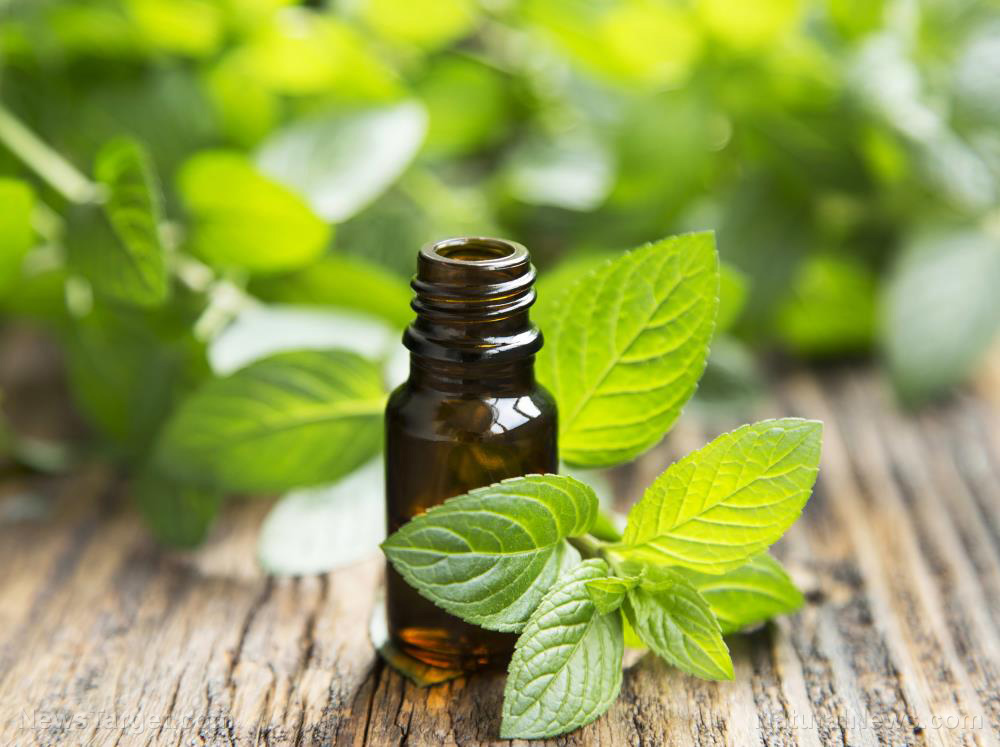 Parler
Parler Gab
Gab
- Herbs like peppermint, chamomile, and fennel offer scientifically-backed relief for common digestive complaints such as bloating, gas, and IBS symptoms by relaxing digestive muscles and reducing inflammation.
- Spices including caraway, cumin, and gentian root work by stimulating the body’s own digestive processes, increasing essential acid and enzyme secretion to break down food more efficiently.
- The slippery elm bark provides therapeutic relief to the digestive tract, forming a soothing film over irritated mucous membranes.
- The therapeutic power of these plants lies in their specific bioactive compounds, such as menthol, anethole, and thymol, which interact directly with the human digestive system.
- Historical use in traditions like Ayurvedic medicine provides a long-term context for their efficacy, suggesting these remedies have stood the test of time.
- Integrating these herbs into a daily routine, through teas, capsules, or as culinary additions, represents a gentle yet powerful strategy for managing gut health and improving overall well-being.
The gentle soothers: calming the troubled gut
For those who feel the immediate, often stressful, clench of indigestion or the slow burn of gut inflammation, certain herbs act as a calming balm. Peppermint, with its bright, invigorating aroma, is far more than a simple breath freshener. Its power resides in menthol, the primary active compound that gives the plant its characteristic coolness. Inside the body, menthol functions as a carminative and antispasmodic agent. This means peppermint helps release trapped upper intestinal gas while gently relaxing the smooth muscles of the digestive tract. This action can untangle the knots of stomach cramps and provide significant relief for the bloating and flatulence that so often plague IBS sufferers. Imagine the tense, coiled muscles of an overworked stomach slowly being encouraged to unclench, allowing pent-up gas to dissipate and pain to subside. Similarly, a cup of steaming chamomile tea is an act of kindness to a distressed gut. Long heralded in folk medicine for its gentle sedative effects, chamomile’s benefits extend deeply into the digestive system. It is densely packed with polyphenols, which are powerful antioxidants that wage a quiet war on inflammation within the gastrointestinal tissue. These compounds help to soothe an irritated stomach lining, much like applying a cool compress to a fevered brow. Furthermore, chamomile possesses its own antispasmodic qualities, working to calm involuntary muscle contractions that can lead to discomfort and pain. Then there is fennel, a plant with a history as rich as its licorice-like flavor. Traditionally chewed after meals in many Indian restaurants, fennel seeds contain a compound called anethole, which works in a manner similar to the neurotransmitter dopamine to relax the gut muscles and dispel gas. Its ability to calm spasms in the intestines makes it a formidable ally against trapped wind, offering a sense of relief that feels both sudden and profound.The digestive stimulants: awakening the body’s inner fire
While some herbs calm, others awaken, acting as catalysts to ignite the body’s innate digestive capabilities. This is where the conversation moves from mere relief to proactive enhancement. The process of digestion is a delicate chemical dance, reliant on a precise balance of acids and enzymes to break down food into the nutrients our bodies crave. When this balance is off, food can sit heavily in the stomach, leading to bloating, constipation, and that lingering feeling of fullness. Caraway seeds, a staple in ayurvedic medicine known as ajwain, are a powerful corrective to this stagnation. Their secret weapon is a compound called thymol, a potent phenol that acts as a direct stimulant to the gastric glands. Thymol encourages the stomach to produce more of the essential acids required for digestion; this acid then activates a critical enzyme called pepsin, which begins the crucial work of breaking down proteins, making them more bio-available not only to the body but to the friendly bacteria residing in the gut. This concept of stimulation is masterfully embodied by the gentian root, a herb that has been used for centuries in European folk medicine. Gentian is considered a bitter tonic, and its function is foundational. It does not merely add a single compound to the mix; it encourages the entire digestive system to spring into action. When its bitter constituents touch the tongue, they send a signal through the nervous system to stimulate the production of saliva, gastric juices, and bile. This cascade of secretions prepares the entire tract for the food to come, improving overall digestive function and ensuring a smoother, more efficient metabolic journey from plate to nutrient. Cumin, the earthy backbone of countless curries and stews, contributes in a different but equally vital way. Beyond its own digestive-stimulating properties, cumin possesses notable antibacterial qualities. Research suggests it can reduce the transit time of food through the digestive tract by roughly twenty-five percent. This is crucial because it limits the amount of time potentially harmful bacteria and waste products have to interact with and damage the delicate, sensitive lining of the colon, thereby protecting the body from within.Weaving the ancient thread into the modern diet
The knowledge that plants can heal the gut is not a new, cutting-edge discovery; it is an ancient truth that modern science is only now fully beginning to quantify and understand. For millennia, cultures across the globe have not only consumed these herbs but have woven them into the very fabric of their daily lives and medicinal practices. The Ayurvedic tradition of India has long championed caraway seeds for digestive woes, just as traditional European apothecaries would have readily prescribed gentian root tinctures for a sluggish appetite. The Roman tendency to feast on fennel after a large meal was likely born from an intuitive understanding of its carminative effects, passed down through generations. This historical context provides a comforting depth to the modern recommendation, suggesting that we are not experimenting with novel compounds but rather reacquainting ourselves with old, reliable friends. Integrating this forgotten pharmacy into a contemporary lifestyle requires no grand gesture, only a mindful shift. It can be as simple as swapping a morning coffee for a cup of peppermint tea, consciously inviting its calming menthol to prepare the digestive tract for the day ahead. It can look like sprinkling caraway seeds onto a lentil soup or roasted vegetables, allowing their thymol to quietly go to work. It can be the deliberate addition of cumin to a pot of beans, not just for flavor but for its protective, transit-hastening benefits. For those seeking more targeted support, supplements like peppermint oil capsules or slippery elm bark powder, which forms a soothing film over irritated mucous membranes, offer a more concentrated approach. The story of these herbs is a reminder that health is often a cumulative process, built from small, consistent choices. Herbal medicine is about engaging in a more collaborative relationship with our own bodies, learning to listen to their needs and responding with the gentle, potent power of the earth itself. Sources include: Dailymail.co.uk Naturalpedia.com Pubmed.gov Pubmed.govUse this roadmap to address burnout and work fatigue
By Lance D Johnson // Share
Your winter defense starts with proper nutrition: How DIET supports immunity
By Patrick Lewis // Share
Dark chocolate’s surprising health perks: from blood sugar to blood pressure
By Patrick Lewis // Share
Oral nicotine: A new frontier in antiviral protection
By Patrick Lewis // Share
20 Medicinal herbs every prepper should grow for survival
By Evangelyn Rodriguez // Share
Governments continue to obscure COVID-19 vaccine data amid rising concerns over excess deaths
By patricklewis // Share
Tech giant Microsoft backs EXTINCTION with its support of carbon capture programs
By ramontomeydw // Share
Germany to resume arms exports to Israel despite repeated ceasefire violations
By isabelle // Share










